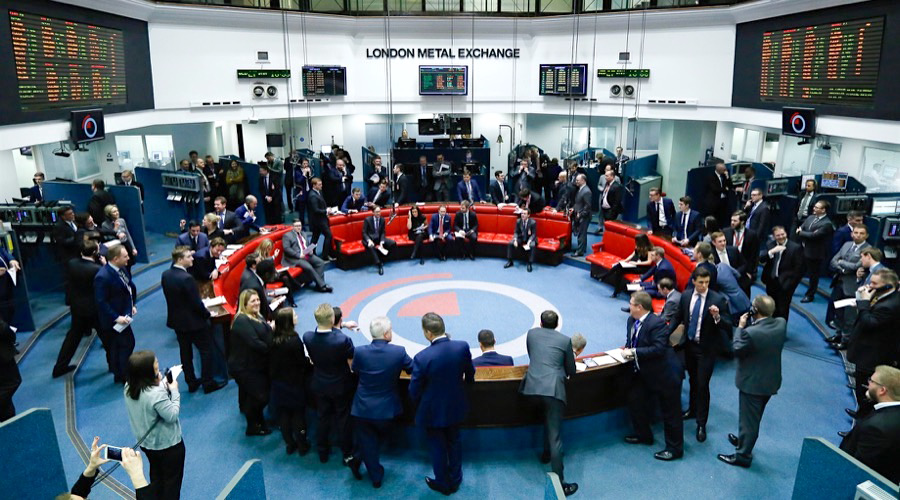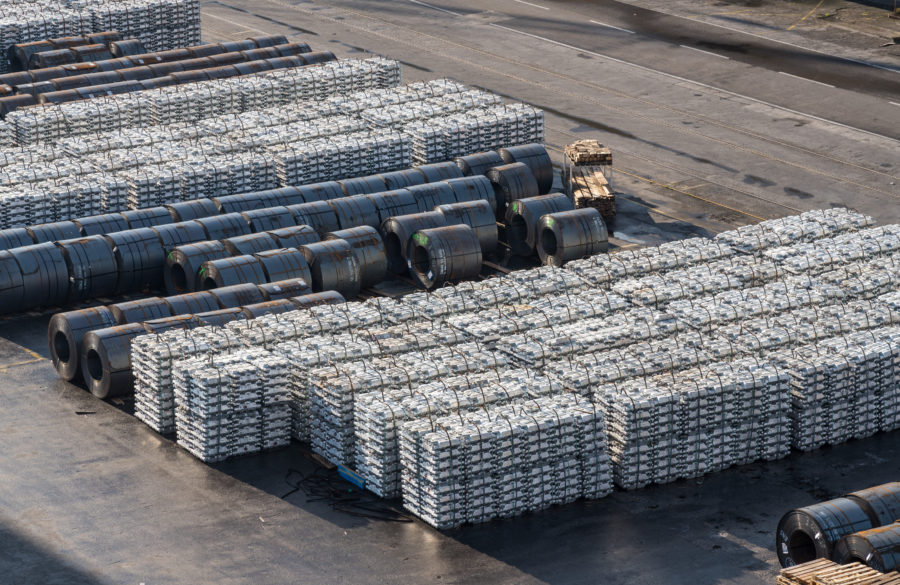Zinc market enters period of peak tightness: Andy Home

* LME Zinc price, spreads and stocks
LONDON – The London zinc market is experiencing unprecedented tightness this week.
As of Monday’s close, the London Metal Exchange’s (LME) benchmark cash-to-three-months spread CMZN0-3 was valued at a backwardation of $97 per tonne.
The cash premium is now higher than the last spike in October 2017 with the only historical comparison the years 2006-2007, when LME stocks were also super low and the outright price hit an all-time high of $4,580 per tonne.
Things may ease a bit after this week but zinc’s period of peak tightness is here to stay a while yet.
Fast forward a decade and the LME three-month price is currently treading water around $2,600, a long way off its February high of $3,600 per tonne.
This dissonance between spreads and price is a manifestation of the greater financialisation of the zinc market over the intervening decade with fund money a more powerful price driver.
And funds have been playing zinc from the short side since February, catching the unwary in a biting bear trap.

Cash Crunch
Investors turned negative on zinc almost as soon as it scaled those February highs.
The market narrative turned on a dime from one of bullish raw materials squeeze to one of bearish mine supply surge.
Deepening concern about the macroeconomic implications of the simmering trade war between the United States and China simply reinforced the consensus view that zinc had seen the highs for this particular cycle.
By July, speculators had lifted their collective short exposure to almost 30 percent of LME open interest, according to LME broker Marex Spectron.
As of last week, they were still short to the tune of 4 percent, leaving them vulnerable to a cash crunch on this week’s prime monthly prompt date.
And so it has come to pass.
In theory, the passage of the November prompt should ease some of the spreads pressure. But beyond this week’s specific flash-point, the whole LME curve remains deeply backwardated.
The December 2018-December 2019 spread, for example, was valued at a backwardation of $135.50 on Monday.
It will take a sustained increase in LME stocks to change this dynamic.
Where’s the metal?
LME headline inventory has been sliding since the start of October and at a current 122,625 tonnes it is now down by 58,350 tonnes since the start of 2018 and at its lowest outright level since 2008.
The wholesale rotation of metal between on- and off-market storage in locations such as New Orleans and the Belgian port of Antwerp has generated plenty of misleading signals, both bullish and bearish, in recent months.
It might even be argued that the warranting of 78,950 tonnes of zinc at New Orleans at the start of March effectively killed the zinc rally by undermining the bullish narrative of a supply shortfall.
However, it was but one turn of a constantly evolving merry-go-round, headline inventory reflecting not underlying zinc market fundamentals but rather the mechanics of the LME’s own warehouse system.
Parcels of zinc keep showing up sporadically in New Orleans, although inflow at the U.S. port has totalled a modest 11,850 tonnes since the start of October despite the strong incentive to deliver off-market metal into the current tightness.
Today’s LME report showed “arrivals” of zinc at the Dutch ports of Rotterdam and Vlissingen. Neither held any registered zinc stocks at the start of the year and Vlissingen hasn’t held any since 2014.
The clear inference is that these are deliveries by distressed shorts into this week’s squeeze and not necessarily by the usual suspects who prefer to play in the physical zinc market twilight zone that is New Orleans.
More may well be on its way as this week’s cash crunch plays out.
But it will take significant tonnages to rebuild LME inventory to sufficient levels to prevent more cash date crunches over the next few months.
Metal Squeeze
The current LME squeeze marks a period of peak tightness for the zinc market, one that has been building for several years.
Fund money initially chased this story before the story-line switched to the new mine capacity being brought on line in reaction to higher prices.
However, just as the mine crunch has taken its time to play out, so too will the new supply surge.
Take the example of New Century Resources which is bringing the Century mine in Australia back into production.
The closure of Century in 2016 fired the starting gun on zinc’s rally from the $1,500 level. Century’s phoenix-like rebirth under the stewardship of New Century has been equally totemic of the shift in market narrative.
But New Century has only just completed its maiden shipment of zinc concentrates. Evidently, it will take time for Century to ramp up and longer still for that flow of raw material to make a significant impact on the refined metal section of the supply chain.
Right now, shifts to refined metal balance are arguably more important than the tectonic shift from raw materials deficit to surplus.
Given the tightness in zinc metal availability, smelter supply currently trumps mine supply.
At other times the closure of Russia’s Electrozinc 110,000-tonne per year smelter after a fire last month wouldn’t move the price dial. Raw material would simply be treated elsewhere. Electrozinc’s loss would be another producer’s gain.
But the dislocation to metal flows resulting from an expected minimum two-three month outage feeds into an already tight market-place for metal, putting further pressure on off-market stocks, which in turn means less available for LME delivery.
In this respect, the single most important zinc market trend is that of falling refined metal production in China, itself a product of months of deteriorating mine concentrates availability.
None of which means that the zinc price is going to go on the sort of super nova rally seen last decade, at least not unless the fund herd drastically rethinks its views on both zinc and the bigger trade picture.
It does, however, suggest that the period of maximum zinc metal tightness is not going to end with the passage of this week’s November prompt on the London Metal Exchange.
(The views expressed here are those of the author, a Reuters columnist.)
(By Andy Home)
More News
China’s mining investment under Belt and Road Initiative sets new record – report
China's overseas mining investment under its Belt and Road Initiative hit another peak last year at $21.4 billion.
March 29, 2025 | 10:26 pm
Column: Europe’s future metals strategy hindered by current crisis
Chinese over-capacity and high energy prices have accelerated the long-term decline of European steel and aluminum production.
March 29, 2025 | 02:25 pm
{{ commodity.name }}
{{ post.title }}
{{ post.excerpt }}
{{ post.date }}



Comments